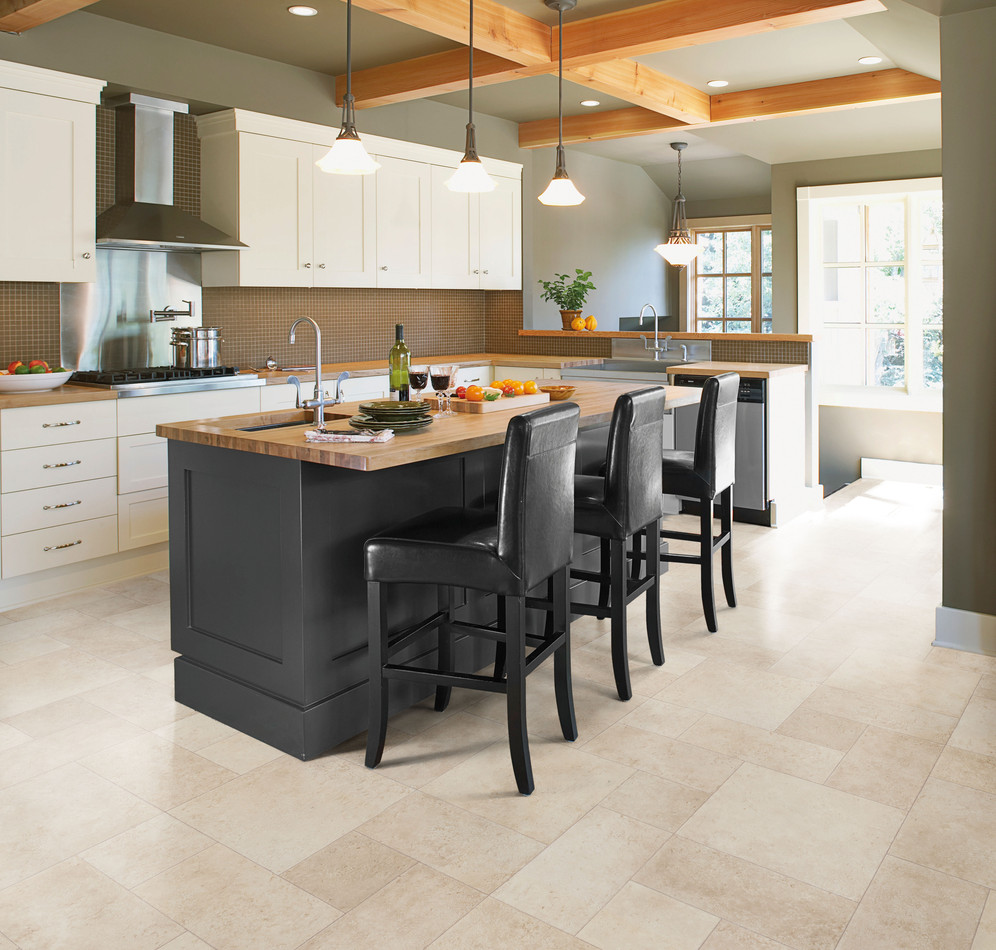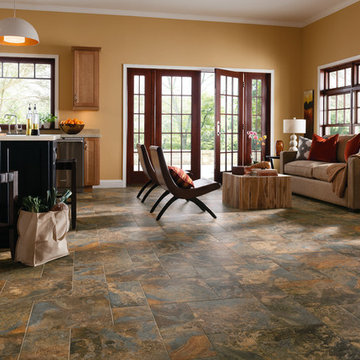Bamboo Floors - Everything You Need To Know
Bamboo Floors - Everything You Need To Know
Blog Article
We have come across this article pertaining to How do you maintain vinyl flooring? listed below on the internet and figured it made good sense to talk about it with you over here.

Bamboo flooring is popular for several home owners as a result of its advantages. It is long lasting as well as available in numerous colors, from light blonde to rich coffee. Likewise, it can be subject to staining to match any type of decoration. It has come to be the significant choiced flooring for business and house owners whenever there is demand for sustainability.
Bamboo just like timber, is at risk to dents and fracturing when moisture degrees vary.
Are you thinking about bamboo flooring for your home? Count on your own fortunate since this article will certainly show you every little thing you require to recognize. We will discuss its attributes to take into consideration. We will also review the various kinds of bamboo flooring offered on the market. Maintain analysis!
Types of Bamboo Flooring
There are three standard choices: strand-woven, upright, and also straight. House owners can select which kind of bamboo flooring to purchase based on their traits. The customer's designated aesthetic influences the selected Bamboo flooring kind.
Engineered Bamboo Flooring
Both solid as well as crafted bamboo flooring choices are available. When the bamboo timber fits, it isn't very easy to distinguish between them.
Their differences are due to their production. Crafted bamboo timber has a slim plywood support.
However, whether engineered or solid, bamboo flooring is durable, resistant, and also appealing.
Engineered bamboo flooring utilizes the drifting timber flooring over a slim foam base. They might also be in the form of broad planks. They are offered in widths up to 19 cm.
Solid - Horizontal Bamboo Flooring
You will observe that this type is virtually the like vertical bamboo flooring. It has a slight variant. Straight bamboo is one of the most popular sorts of bamboo flooring.
It is made by drying out big strips of bamboo, cutting these bigger pieces right into thinner strips, and then gluing them to create planks. The boards will certainly then go through stress as well as warmth to ensure they are well attached.
Natural bamboo has a lighter shade. Thus, the strips are often discolored. While carbonized bamboo will certainly be less difficult than regular bamboo, if you need a darker shade, it might do you good. It likewise provides the natural bamboo looks as well as a selection of alternatives.
Strand Woven Bamboo Flooring
Shredding the bamboo to remove the fibers is just one of the extra tempting action in generating strand-woven bamboo floors.
The bamboo fiber is typically mixed with an adhesive after it's made to a pulp. The product is after that knitted and pressed together under wonderful heat, as the name recommends.
After making horizontal and vertical bamboo, the strips serve to produce strand woven bamboo. The eco-conscious purchaser may discover this feature appealing. The factor is that it makes sure that the entire bamboo stalk generates really little waste.
Solid - Upright Bamboo Flooring
Thin strips of completely dry bamboo timber glued vertically as well as pushed using high warmth and stress create this type of bamboo flooring.
The thinnest side of the bamboo slabs will certainly be in an upright kind. A firm bonding, pressing, and also lamination will follow. Because of their method of joining, the bamboo strips include a slim grain pattern.
The good idea regarding this type of bamboo flooring is that it is really economical and also resilient. It provides a stylish and sophisticated flooring surface. Yet it is not commonly available.
When Choosing Bamboo Flooring, attributes And Also What to Keep in Mind
With a multi-layered finishing, bamboo flooring will be rather long lasting. Yet remember that future touch-ups may need an extra competent flooring specialist.
Also, using your finish will certainly make matching repairs less complicated once established in your home. The surface will certainly not last as long as factory finishes.
Apart from that, below are some interesting features of bamboo flooring.
Eco-Conscious
This flooring comes from a natural plant called the bamboo plant. So when contrasted to other tree varieties used to make hardwood flooring, bamboo grows more and much faster.
Inexpensive Maintenance
You can maintain bamboo flooring in good condition by cleansing and also damp wiping. So regardless of being a lot more vulnerable to scrapes, bamboo flooring is really easy to maintain.
You might get bamboo floors that are like new by sanding them down and also applying a fresh coat of paint.
Durable
Bamboo flooring is not produced equivalent. There are numerous sorts of bamboo, and the various techniques made use of to turn it into slabs impact its durability.
Therefore, bamboo, like wood flooring, can become prone to deterioration gradually. Also, damaging, fracturing, and also various other damage might take place. You can also sand some bamboo to resemble hardwood, however not all.
Bottom Line
It's straightforward to understand why bamboo flooring has ended up being more favored nowadays. For practically any home, bamboo supplies lots of solid as well as sound solutions for the setting. As a result, bamboo floor could be the very best option for upgrading your flooring.
We will additionally talk about the different kinds of bamboo flooring available on the market. House owners can pick which type of bamboo flooring to acquire based on their qualities. Horizontal bamboo is one of the most prominent kinds of bamboo flooring.
While carbonized bamboo will certainly be less difficult than normal bamboo, if you need a darker color, it might do you excellent. After making horizontal and vertical bamboo, the strips serve to develop hair woven bamboo.
Bamboo Flooring
Manufacture of Bamboo Flooring
Stranded bamboo is made by shredding the bamboo stalks into small strands, which are compressed into sheets using heat and resin binders, then cut into planks to use as building materials. This form of flooring is available both as tongue-and-groove planks that are nailed down, as well as planks that float over the underlayment. This is a premium form of bamboo flooring, available in many colors.
Horizontal bamboo flooring is manufactured by cutting the strands into thin strips which are then glued together to form planks. This type of flooring has a "grain," since the long stalk fibers are visible in the flooring. This type of bamboo is not as hard or durable as stranded bamboo, but it can have a very striking appearance. It, too, is available both in nail-down planks and as floating floor planks.
Engineered bamboo flooring is made by bonding a thin layer of bamboo onto a plywood or MDF core. This flooring is comparable to engineered hardwood and is installed in the same way—usually with click-lock planks that float over a foam underlayment. It is the least expensive (and least durable) form of bamboo flooring, and it cannot be refinished.
Unless it is stained, most bamboo flooring has a natural blonde or amber color that resembles unfinished maple or birch, but darker tones are available through a process called carbonizing, which entails subjecting the planks to high temperatures. While the color can be very attractive, carbonized bamboo is softer than uncarbonized forms, and is more susceptible to scratching.
Eco-Friendliness
Environmentally conscious consumers are often drawn to bamboo as a wholly renewable resource. Unlike the hardwood lumber industry, where trees can take decades to mature, bamboo stalks grow so fast that there is little environmental liability to the harvest practices. Moreover, bamboo stalks that are cut simply continue to grow and replenish themselves so that they can be harvested.
But the manufacturing process creates other environmental concerns. Bamboo floor planks are manufactured by slicing or shredding the stalks of bamboo grass plants and then compressing the pulp back together using heat, pressure, and a resin-based adhesive identical to those used in many other flooring products. This adhesive often contains urea-formaldehyde that can outgas into the air.1
The level of adhesive used and the amount of toxins emitted will vary, depending on how the bamboo planks are manufactured. Cheaper products may contain more formaldehyde, while more expensive products may use alternative materials in the resins. The amount of formaldehyde used in bamboo flooring is similar to that found in engineered hardwood flooring or MDF sheathing, and it tends to be a problem only for sensitive individuals.2 But if this concerns you, look for bamboo products labeled as formaldehyde-free.
Bamboo Flooring Cost
This material is priced at about the same level as most hardwood floors. You can find bamboo flooring products ranging from about $2 to $8 per square foot, with a national average of $3.84 per square foot. Installation costs for bamboo flooring are much the same as for hardwood flooring. On average, figure on adding about $4 per square foot for installation labor in addition to the cost of materials. You should be able to get a good-quality bamboo installed for less than $10 per square foot, including materials and labor.
https://www.thespruce.com/benefits-and-drawbacks-of-bamboo-floors-1314694

As a devoted reader on How to clean and maintain vinyl flooring, I imagined sharing that excerpt was important. If you please set aside a second to promote this content if you appreciated it. Thanks so much for your time invested reading it.
Report this page